Common Pricklyash Provides Reliable Orange or Gold Color in Autumn
Zanthoxylum americanum also serves as food for pollinators, nesting site for songbirds and host for butterfly larvae
Heather Holm
November 3, 2016
I’m sure common pricklyash (Zanthoxylum americanum) is not on most gardeners’ planting lists, but this underutilized multistemmed shrub native to the eastern U.S. has several interesting and desirable qualities: Flowers in early spring attract several types of bees; bright red fruit clusters lend interest in late summer and autumn; dense growth habit provides nesting sites for songbirds; and foliage color in autumn is orange or gold. This shrub forms thickets through root suckering, so it’s not suitable for small gardens.
Botanical name: Zanthoxylum americanum
Common names: Common pricklyash, prickly ash, toothache tree
Origin: Native to North America from the eastern Dakotas and central Nebraska eastward to New England in the north, and from Oklahoma north and east to Maryland in the south; in Canada, native to southern Ontario and Quebec
Common names: Common pricklyash, prickly ash, toothache tree
Origin: Native to North America from the eastern Dakotas and central Nebraska eastward to New England in the north, and from Oklahoma north and east to Maryland in the south; in Canada, native to southern Ontario and Quebec
Male flowers
Where it will grow: Hardy to minus 35 degrees Fahrenheit, or minus 37.2 degrees Celsius (USDA zones 3 to 7; find your zone)
Typical plant communities: Woodland edges, old fields or railway rights of way
Water requirement: Little to none once established; very drought-tolerant
Light requirement: Full sun to partial sun
Mature size: 10 to 20 feet tall and 8 feet wide
Where it will grow: Hardy to minus 35 degrees Fahrenheit, or minus 37.2 degrees Celsius (USDA zones 3 to 7; find your zone)
Typical plant communities: Woodland edges, old fields or railway rights of way
Water requirement: Little to none once established; very drought-tolerant
Light requirement: Full sun to partial sun
Mature size: 10 to 20 feet tall and 8 feet wide
Fruit
Benefits and tolerances: Tolerates most soil types except heavy clay; hosts larvae of the giant swallowtail butterfly; attracts pollinators with flowers
Seasonal interest: Clusters of small flowers that open in April or early May before leaf emergence; dark green glossy leaves in summer and clusters of red fruit maturing in August; yellow or orange fall foliage
When to plant: Spring or fall
Benefits and tolerances: Tolerates most soil types except heavy clay; hosts larvae of the giant swallowtail butterfly; attracts pollinators with flowers
Seasonal interest: Clusters of small flowers that open in April or early May before leaf emergence; dark green glossy leaves in summer and clusters of red fruit maturing in August; yellow or orange fall foliage
When to plant: Spring or fall
Form in summer
Distinguishing traits. Common pricklyash is a multistemmed shrub with lateral thorns on its stems. It flowers in early spring before the leaves emerge and has reliable gold or orange fall color. The fruit has a strong citrus odor and oily secretion when crushed. It spreads outward by root suckers to form large thickets.
Note: It is not a true ash belonging to the Fraxinus genus, and it is not susceptible to an emerald ash borer infestation.
Distinguishing traits. Common pricklyash is a multistemmed shrub with lateral thorns on its stems. It flowers in early spring before the leaves emerge and has reliable gold or orange fall color. The fruit has a strong citrus odor and oily secretion when crushed. It spreads outward by root suckers to form large thickets.
Note: It is not a true ash belonging to the Fraxinus genus, and it is not susceptible to an emerald ash borer infestation.
How to use it. Plant on a large property along the edge of a woodland, along a fence or a similar partial-shade site. It forms large thickets, creating ideal nesting sites for songbirds that prefer to nest closer to the ground.
Common pricklyash is a larval host plant for the giant swallowtail butterfly.
Planting notes. Common pricklyash is easy to grow and requires little to no watering once established. The branches have thorns, so it’s best to put common pricklyash on the edge of a property away from regular foot traffic.
Rabbits browse young woody stems during the winter; protect new plantings with wire exclosures.
Planting notes. Common pricklyash is easy to grow and requires little to no watering once established. The branches have thorns, so it’s best to put common pricklyash on the edge of a property away from regular foot traffic.
Rabbits browse young woody stems during the winter; protect new plantings with wire exclosures.
A female mining bee
Pollinator notes. Common pricklyash is a larval host plant for the giant swallowtail butterfly (Papilio cresphontes) and may be one reason why the butterfly is ranging farther north than historically recorded.
Female pricklyash flowers are self-incompatible and rely on flower-visiting insects for pollination. The bisexual flowers produced on male plants are self-compatible, often flowering later than the male or female flowers, and produce a sporadic amount of fruit on male plants. Common bee genera that visit the flowers include mining bees (Andrena spp.) and small sweat bees (Lasioglossum spp.)
More
Garden Design for Wildlife and Less Work
See more Great Design Plants
Pollinator notes. Common pricklyash is a larval host plant for the giant swallowtail butterfly (Papilio cresphontes) and may be one reason why the butterfly is ranging farther north than historically recorded.
Female pricklyash flowers are self-incompatible and rely on flower-visiting insects for pollination. The bisexual flowers produced on male plants are self-compatible, often flowering later than the male or female flowers, and produce a sporadic amount of fruit on male plants. Common bee genera that visit the flowers include mining bees (Andrena spp.) and small sweat bees (Lasioglossum spp.)
More
Garden Design for Wildlife and Less Work
See more Great Design Plants
Related Stories
Fall Gardening
20 Favorite Flowers for the Fall Landscape
Vivid blooms and striking shapes make these annuals and perennials a delight in autumn gardens
Full Story
Gardening Guides
14 Beautiful Native Plants for Shade Gardens
These hardworking perennials thrive in areas with dappled light to full shade and create a lovely woodland garden look
Full Story
Events
Orchids Dazzle at New York Botanical Garden Show
By Elena Vega
See the gorgeous floral array filling a historic Victorian-style greenhouse — and get tips for growing orchids at home
Full Story
Gardening Guides
10 Beautiful Native Plants to Enliven Winter Gardens
Bring your yard to life in winter with these colorful, structural and wildlife-friendly plants from around the country
Full Story
Gardening Guides
What to Do After Spring Bulbs Have Bloomed
Here’s how to care for daffodils, tulips, hyacinths and other bulbs when they’re done blooming
Full Story
Planting Ideas
5 Summer-Blooming Bulbs to Plant This Spring
These fast-growing bulbs will brighten your garden this summer
Full Story
Roses
9 Roses That Landscape Designers Love
See which beautiful and reliable rose varieties are favored by designers around the country
Full Story
Gardening Guides
12 Gorgeous Flowers and Shrubs for Winter Gardens
These pick-me-up plants brighten gray days and add color, structure and fragrance when everything else is dormant
Full Story
Gardening Guides
15 Shade-Loving Plants With Showy Flowers or Foliage
These all-star perennials bring bright colors and bold textures to beds ranging from partial shade to full shade
Full Story
Landscape Design
How 7 Landscape Designers Create Beautiful Gardens With Verbena
Verbena bonariensis works wonders as an airy screen, back-of-bed flower, window box plant and more
Full Story






















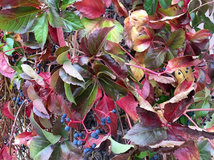
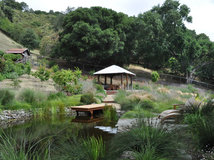










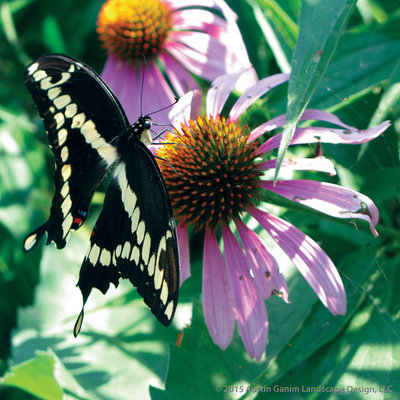

















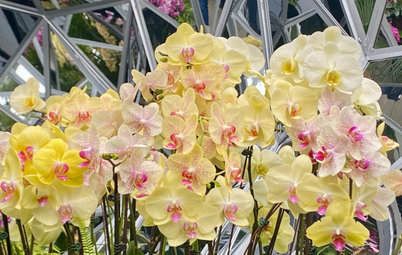


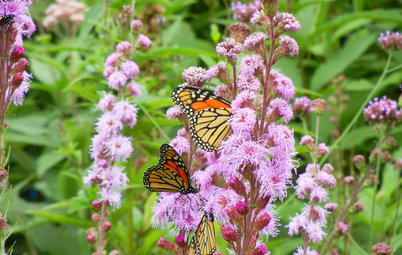
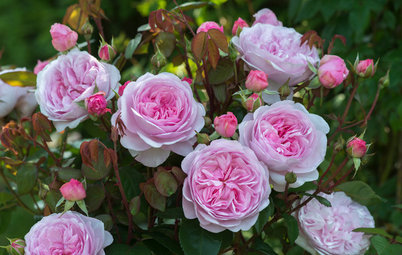
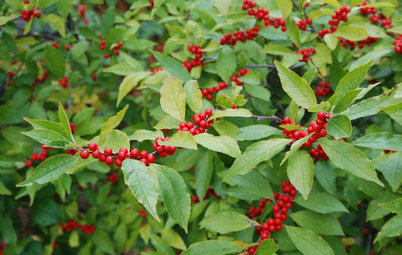


I am planning to plant shrubs that attract bees, but the only type of bee I'd like not to have around is the carpenter bee, but it is pretty common in this area.
Like it's kin, it tends to have nasty thorns.